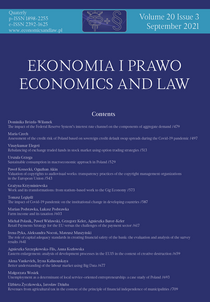Retail Payments Strategy for the EU versus the challenges of the payment sector
Retail Payments Strategy for the EU versus the challenges of the payment sector
Author(s): Michał Polasik, Paweł Widawski, Grzegor Keler, Agnieszka Butor-KelerSubject(s): Business Economy / Management, EU-Approach / EU-Accession / EU-Development, ICT Information and Communications Technologies
Published by: Wydawnictwo Naukowe Uniwersytetu Mikołaja Kopernika
Keywords: Single Payments Market; payments strategy; open banking; PayTech; BigTech;
Summary/Abstract: Motivation: The payment services sector has become one of the main areas for the development of financial innovation and the key element of the digital economy. However, the payment services market in the European Union (called the European Payments Market) is still fragmented along national borders, insufficiently integrated, and facing several challenges. Therefore, the newly announced Retail Payments Strategy for the EU is a document of great importance for the future of the entire EU economy, and deserves in-depth study. Aim: The purpose of this paper is to assess whether the trends and challenges identified by the European Commission in the Retail Payments Strategy, and the general directions and proposed actions presented in this document, appropriately reflect the challenges faced by the European payment market. Results: A comparative analysis of the Strategy’s assumptions and proposed actions was conducted, in relation to the identified challenges of the payment sector. The empirical data were derived from a survey of 202 experts from all EU member states, and the UK, Norway and Switzerland, covering all types of bank and non-bank payment market players. The analysis confirmed that the Strategy identified the main challenges and opportunities, in line with the results of the expert survey: the need for further development of open banking; cross-border integration and development of instant payments systems; and ensuring access to the banking payment infrastructure, including contactless and NFC mobile payments. However, the proposed directions of action in selected areas have not been sufficiently rationalised, and most of the actions have been left to be specified in the future. In addition, the Strategy relies mostly on the use of regulatory tools that may limit innovativeness. Although the Commission and the surveyed experts agreed in recognising the challenges related to the increasing role of BigTechs in the payment sector, no comprehensive solution addressing the related challenges was proposed in the Strategy
Journal: Ekonomia i Prawo. Economics and Law
- Issue Year: 20/2021
- Issue No: 3
- Page Range: 617-640
- Page Count: 24
- Language: English

